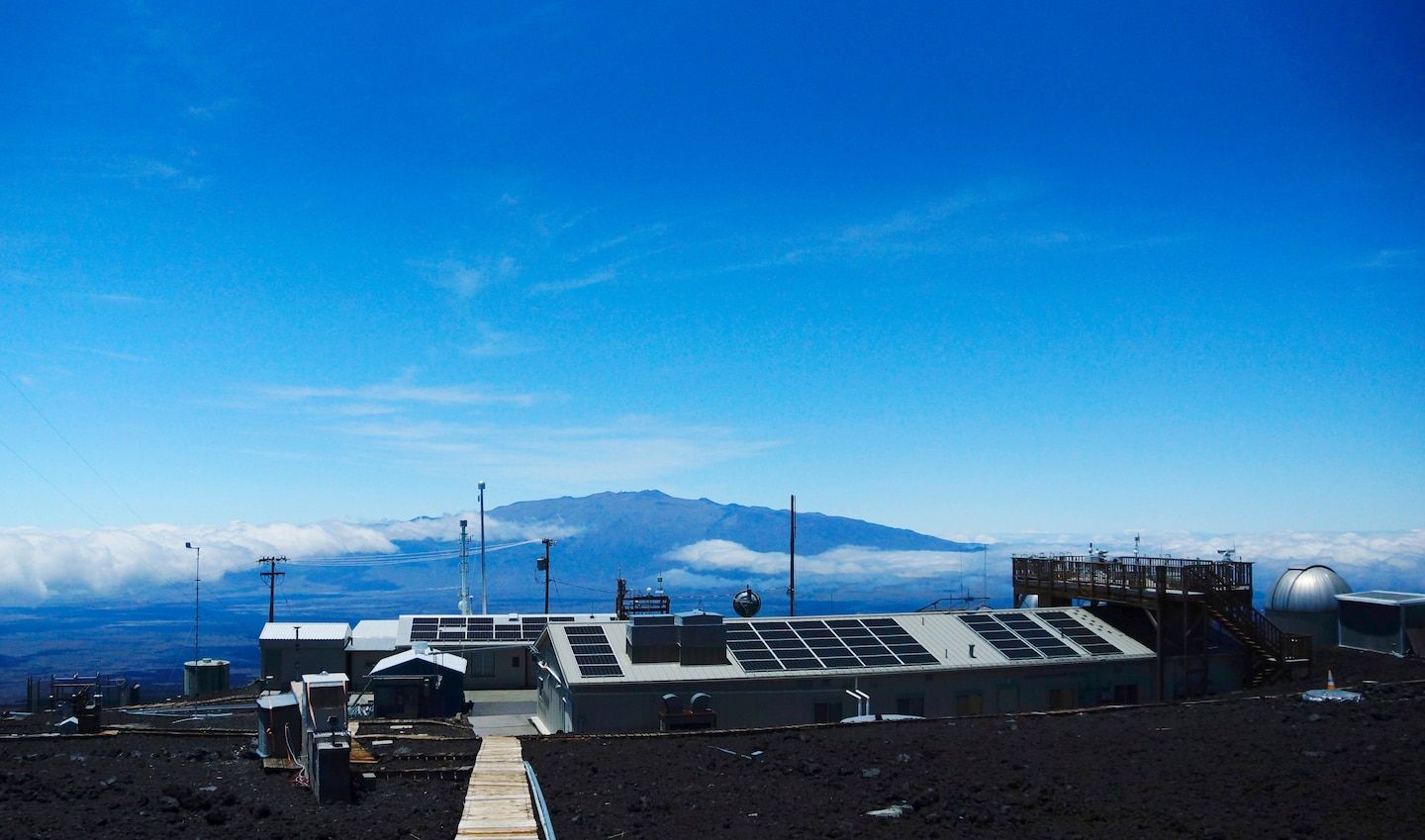Carbon dioxide is growing at near-record rate, NOAA reports
Listen 4 min Comment on this story Comment Gift Article Share
Despite rising awareness about global climate change and its devastating impacts, carbon dioxide levels keep treading in the wrong direction. This year’s annual increase of CO2 levels is one of the largest on record, representing an accumulation of the heat-trapped gases “not seen for millions of years,” scientists from the Scripps Institution of Oceanography and the National Oceanic and Atmospheric Administration said Monday. The current amount of carbon dioxide in the atmosphere is now 50 percent higher than it was before the industrial era, the NOAA and Scripps scientists said in a report.
The new figures offer more evidence that global climate efforts — including transitioning from fossil fuels to cleaner energy — are falling short of what scientists say is needed to stem the warming of the planet.
Advertisement
“Every year, we see the impacts of climate change in the heat waves, droughts, flooding, wildfires and storms happening all around us,” said NOAA Administrator Rick Spinrad in a statement. “While we will have to adapt to the climate impacts we cannot avoid, we must expend every effort to slash carbon pollution and safeguard this planet and the life that calls it home.”
Carbon dioxide levels in May averaged 424.0 parts per million (ppm) — the fourth-largest annual increase since measurements began 65 years ago at the NOAA observatory in Mauna Loa, Hawaii.
The highest monthly mean levels of CO2 peaks occur in May for the Northern Hemisphere — just after plants ooze the gas before growing season. May’s monthly average this year sat at 423.78 ppm, a 3.0 ppm increase over May 2022’s average.
The rises in carbon dioxide levels do not astonish climate scientists who have tracked them over time.
Advertisement
“[The findings are] disappointing, but not surprising. We’re still seeing CO2 rise at the same pace as it has for the last few decades,” Ralph Keeling, a geochemist at Scripps, told The Post.
Carbon dioxide — which is generated by burning fossil fuels for transportation and electrical generation, by cement manufacturing, deforestation, agriculture and many other practices — traps heat from the planet’s surface that would otherwise escape into space. Carbon dioxide pollution, a key greenhouse gas, amplifies extreme weather events, such as heat waves, drought and wildfires, as well as precipitation and flooding.
Between January and April of this year, 12,972 wildfires have scorched more than 392,287 acres of land according to NOAA. Atmospheric rivers, combined with snowmelt, battered the western United States with significant flooding that left hundreds of thousands of people without power.
Advertisement
Last year was declared the fifth- or sixth-warmest year on record by five different scientific organizations. Twenty-eight countries set national record-high annual averages last year, including Britain, Spain, France, Germany, China and New Zealand. Berkeley Earth reported that 850 million people experienced their warmest year ever.
“Whatever we’re seeing weather-wise now is just the beginnings of much bigger changes,” Keeling said.
Scientists can track carbon dioxide in two ways. One is through direct measures of CO2 levels in the atmosphere — as Scripps scientists have been doing at the Mauna Loa observatory. The other method is by estimating emissions from multiple sources — work conducted by the International Energy Agency.
In a March report, the IEA stated that global emissions of carbon dioxide related to energy production grew by 0.9 percent in 2022, reaching a new high of more than 36.8 billion metric tons.
Advertisement
As levels of atmospheric carbon dioxide continue to surge, leaders around the world face mounting pressure to commit to more aggressive plans to reduce greenhouse gas pollution. Last year’s climate summit in Egypt — known as COP27 — was widely viewed as a disappointment on this score, with little progress achieved on binding measures to reduce emissions.
Scientists worry that the new El Niño cycle could increase the rate of CO2 growth in the atmosphere. El Niño, the opposite of La Niña, triggers warmer-than-normal surface waters in the tropical Pacific Ocean and is marked by drought in some regions.
During El Niño, drying tropical vegetation and savannas contribute to higher C02 levels, Keeling said. The previous La Niña cycle has contributed to slightly slower growth rates.
“I expect the news next year to look even worse,” Keeling said.
GiftOutline Gift Article
Source: The Washington Post


